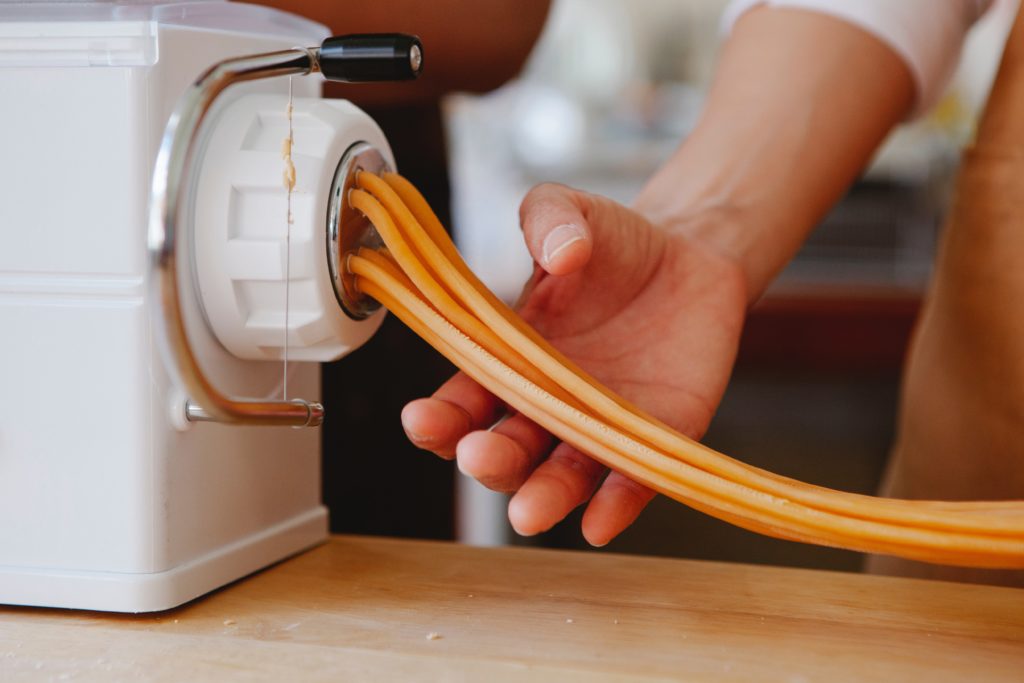
Spaghetti, Fettuccine, Bucatini… Do you know the difference? All types of long pasta explained
If you are a pasta fan, then you should definitely know the difference between the most popular long-shaped pastas: spaghetti, linguine, fettuccine, bucatini… Even though they all look similar, there are some subtle differences that can make a big impact on your dish.
If this hasn’t happened to you, you probably have seen it happen at the table next to yours sometime. It is not uncommon to go to an Italian restaurant, order a dish, and find yourself having to ask the waiter if that’s the correct order when the plate arrives to the table. With so many pasta shapes available it’s easy to get confused!
In this blog post, we will take a closer look at each of these types of pasta and show you how to tell them apart. So that next time you are ordering your favorite dish at an Italian restaurant or cooking it at home, you will be able to identify the right type of pasta every time!
Spaghetti
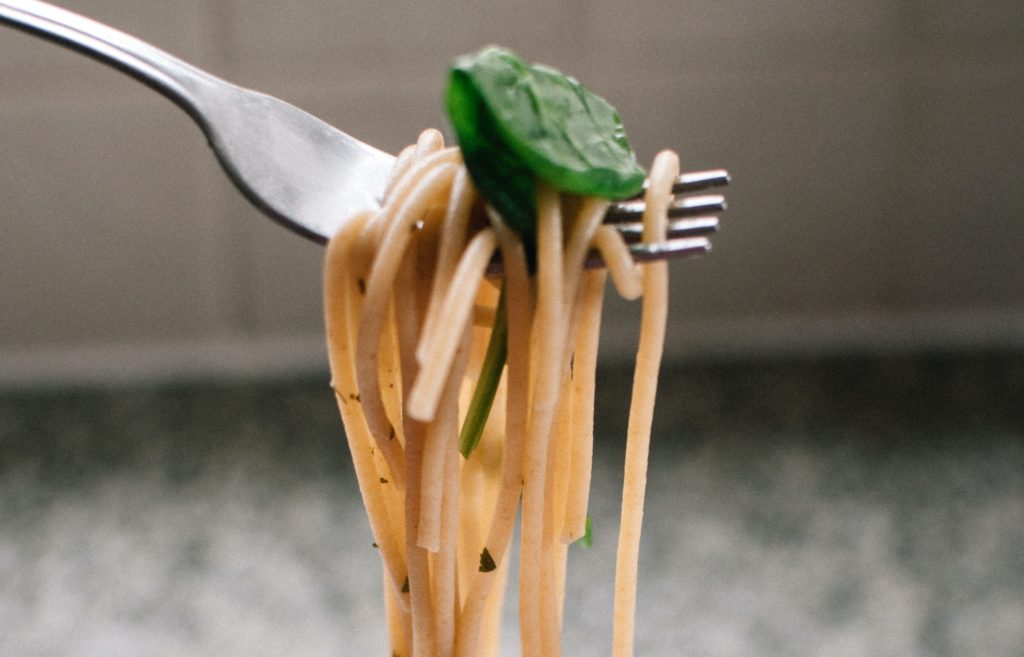
Spaghetti is the most well-known type of long pasta. It is made from a thin, round dough that is extruded through a die to create long, thin strands. If made even thinner, spaghetti can also turn into another type of pasta known as “capellini”.
Spaghetti pairs well with light sauces or vegetables and can be used in a variety of dishes, warm and cold.
Bucatini
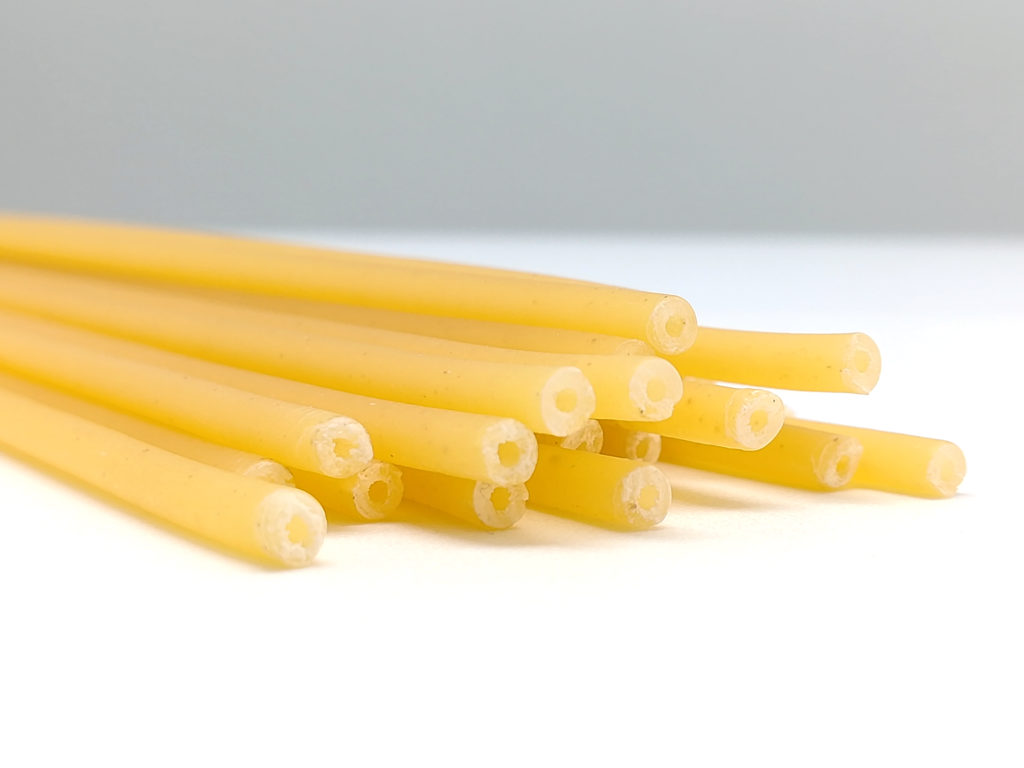
Bucatini is another type of long pasta that is similar in appearance to spaghetti, but thicker. It is made from a hollow dough that is extruded through a die to create long, hollow strands. It is literally like a thick spaghetti with a whole through the middle. There is an even thicker version of bucatini which is called “Maccheroncini”.
Each bucatini already has a lot of pasta in it, so it is usually paired with lighter lighter sauces or served in smaller portions.
Linguine
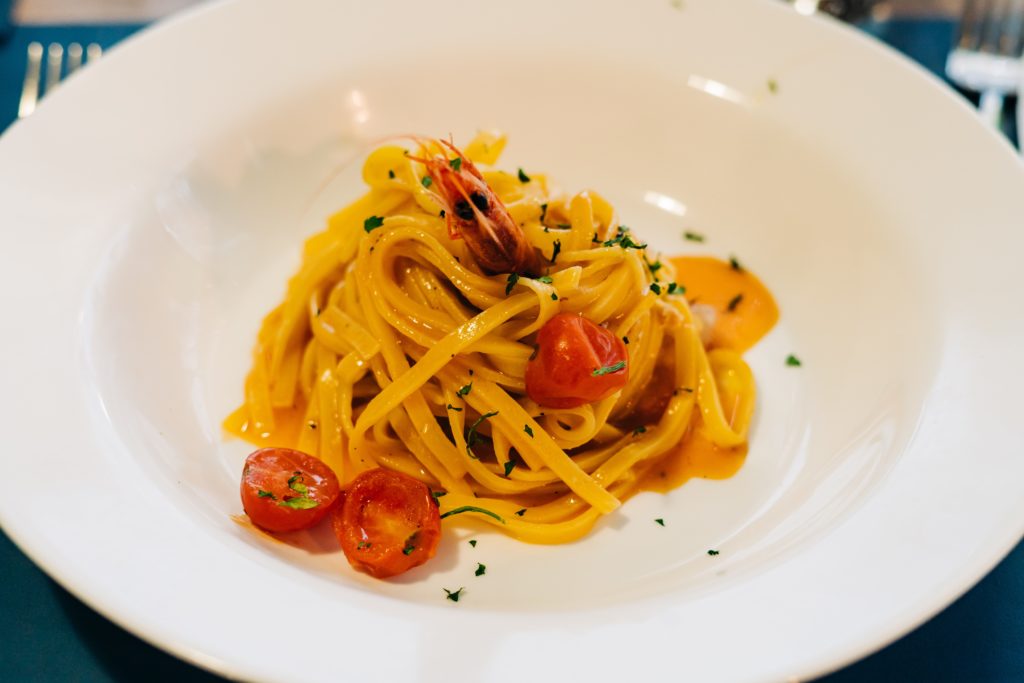
Linguine is another type of long pasta that is similar in appearance to spaghetti. However, it is made from a flattened dough that is extruded through a die to create long, flat strands. From all the types of flat-long pasta (and we will see some of those in just a moment), linguine is the thinnest one possible, kind of like a flattened spaghetti.
Linguine usually pairs well with heavier sauces .
Fettuccine
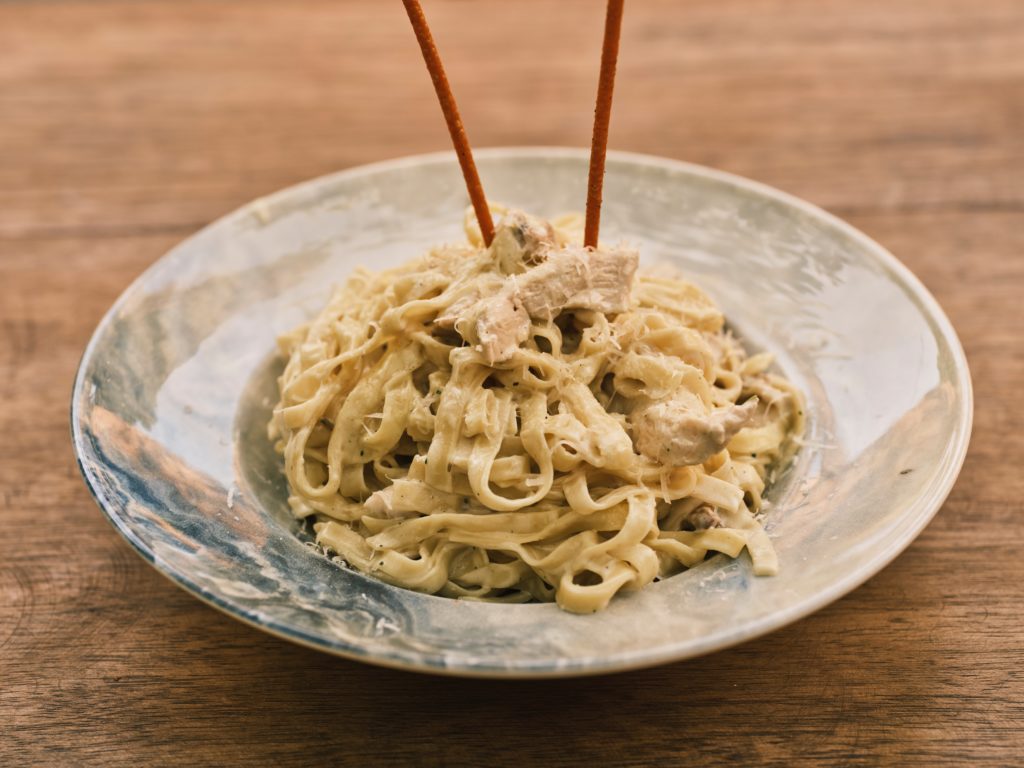
Fettuccine is another type of long-flat pasta that is similar in appearance to spaghetti and linguine. However, it is made from a wider dough (around 4-6mm). Traditional fettuccine is not extruded like spaghetti or linguine, instead it is cut from a flat sheet of pasta.
Fettuccine pairs well with heavier sauces and is probably known by everyone because of the famous pairing “Fettuccine Alfredo”.
Tagliatelle
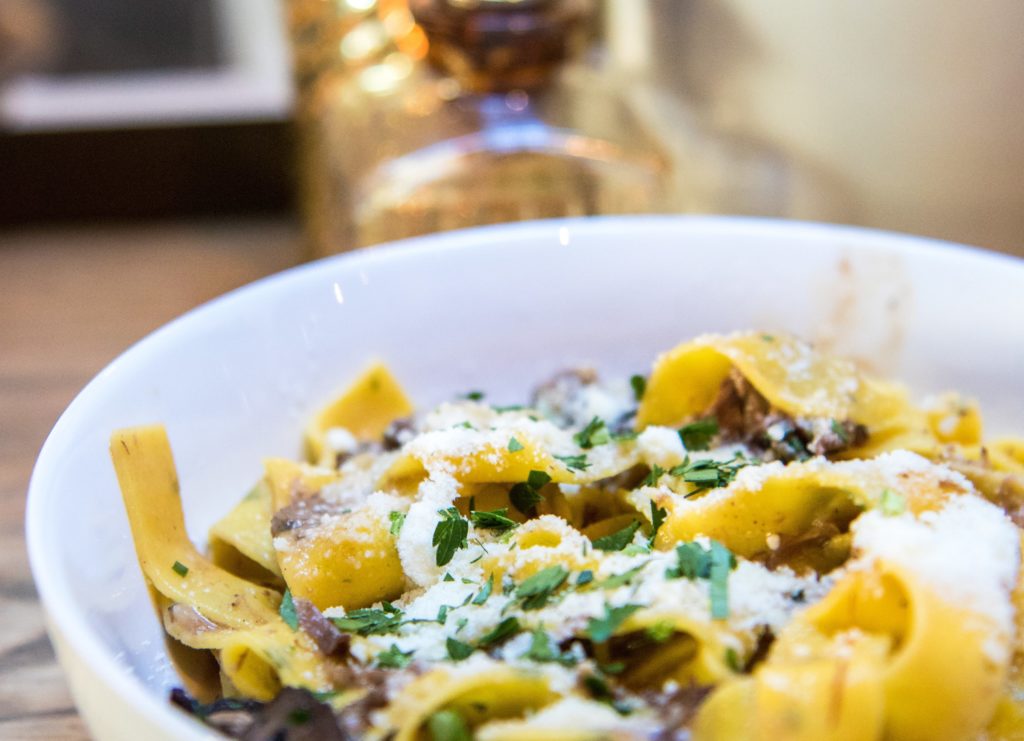
Tagliatelle is the next type of long-flat pasta that is similar in appearance to fettuccine. However, it is made from a thinner dough (around 0.65-0.80mm) and is slightly wider (up to 10mm). Just like fettuccine, tagliatelle is too wide to be extruded, so instead it’s cut out from a flat sheet of pasta.
Tagliatelle pairs well with meat-based sauces or vegetables.
Pappardelle
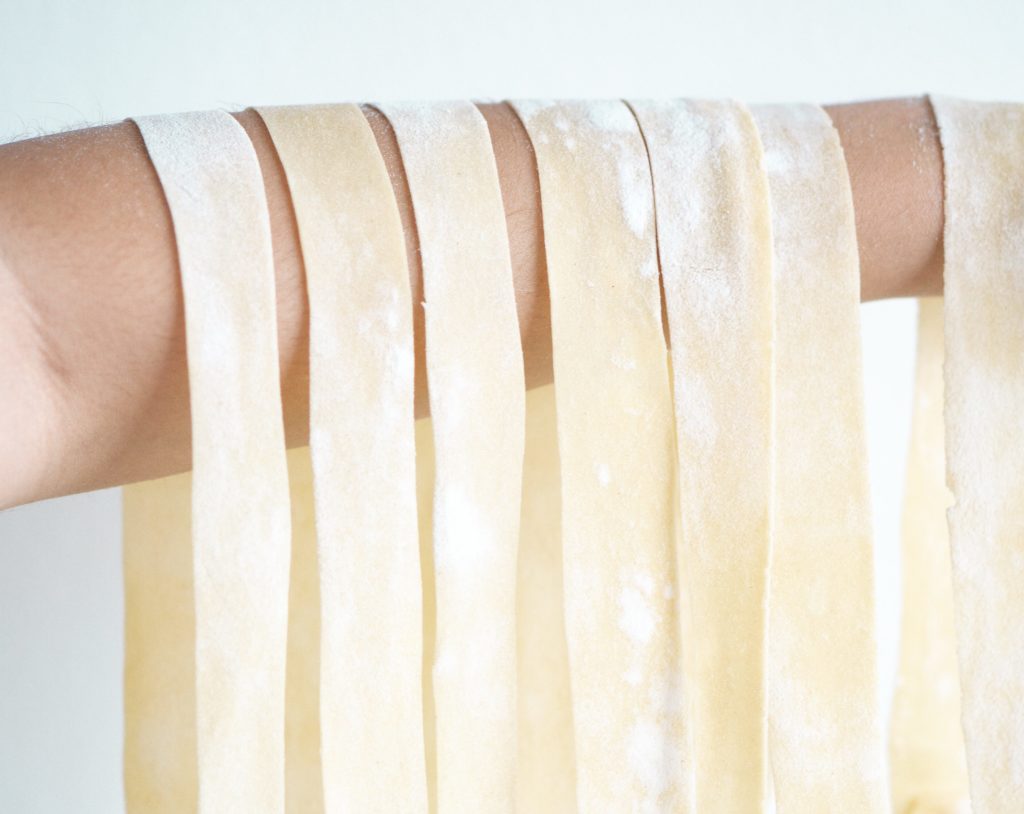
Pappardelle is… did you guess it? That’s right! Pappardelle is just like tagliatelle but wider. Pappardelle can be up to 30mm wide, making it the widest withing the family of long-flat pastas.
Pappardelle is usually served with hearty, meat-based sauces.
Mafaldine
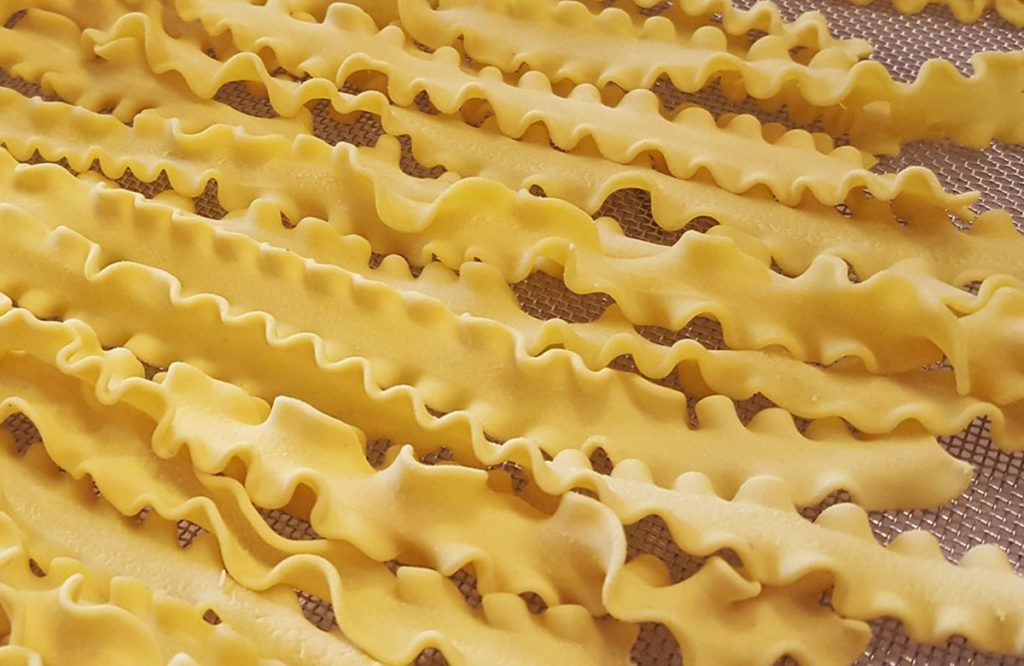
We’ve saved one of the most unique types of long pasta for last. Mafaldine is yet another type of long-flat pasta, which can vary in width from 6mm to 15 mm. The detail that makes mafaldine unique, and very easy to tell apart from all the other shapes of pasta, is that the sides of each mafaldine are wavy, like the bottom of a women’s skirt.
The name “mafaldine” actually comes from a princess called “Mafalda of Savoy”, who was very tall and slender, and who’s lacy dressed inspired the shape of this pasta (or so the story tells). Actually, mafaldine is also known as “reginette”, which in Italian means “little princess”.
It woudn’t be possible to achieve the ruffled edges starting from a flat sheet of pasta, so mafaldine is one of the widest types of pasta to be extruded, traditionally through bronze dies.
Now that you know the difference between all these types of long pasta, you will be able to order or cook your favorite dish with the right type of pasta every time! So, the next time you are at an Italian restaurant or cooking at home, be sure to remember these!
Buon appetito! (That means “enjoy your meal” in Italian!)


[…] is usually between 8-10 minutes, but this can vary depending the type of pasta you’re cooking: long pasta like spaghetti, stuffed pasta, and obviously dry or fresh […]